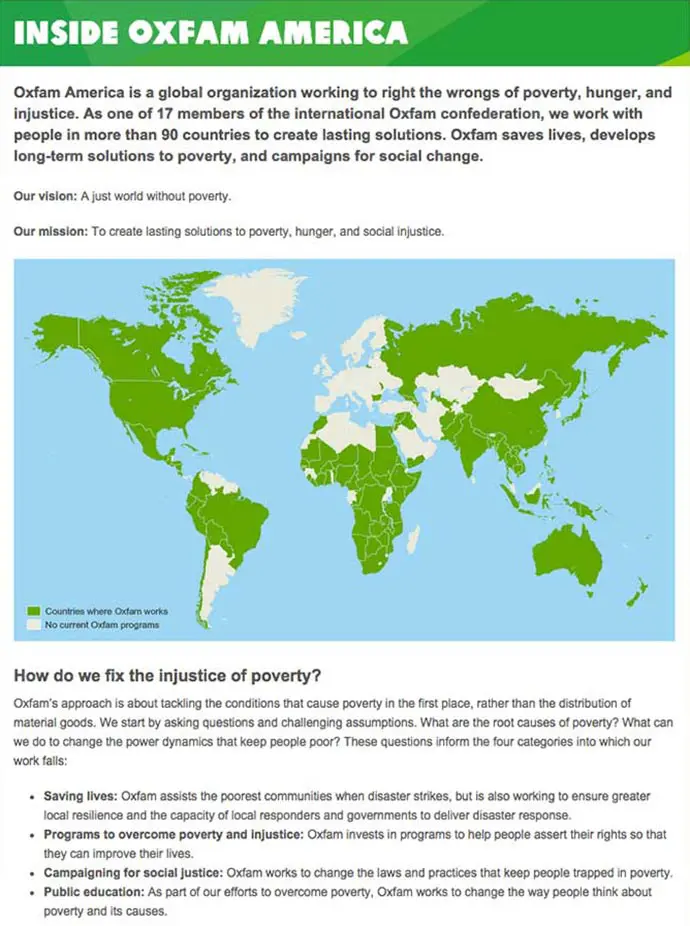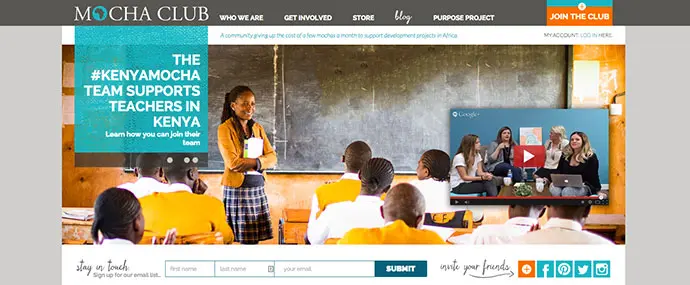In my last post, we talked about how storydoing organizations seek to make an impact – affect positive change. Basically, they want to do exactly what your nonprofit is doing. And, they’re popular. Nonprofits need to start giving themselves a little more credit and actively promote themselves as storydoers rather than merely storytellers.
Now, don’t get me wrong, storytelling is a powerful tool. But, it’s not the only tool in your toolbox. With all of the great work your nonprofit is doing, it’s easy to get caught up in telling the outcome-oriented story rather than sharing the action that produces those results.
Your nonprofit’s role as a storydoer should be expressed in your website’s content. What does this look like? Compelling copy that highlights action and experiences. The goal is to energize your audience to engage with you and spread your nonprofit’s message.
Here are some ideas to flip the perspective and start promoting yourself as a storydoer.
Focus on Your Supporters
Storydoing is ultimately about mobilizing people to actively support and promote your cause – to become a part of your story. Content that focuses on the impact your supporters have (through opportunities created by you) will catch visitors’ eyes and inspire them to engage with you.
Get Specific
Spell out exactly why you need supporters. Clearly explaining why they are necessary lets them know that they are important to the success of your nonprofit. Telling your supporters that they matter is a powerful way to encourage loyalty.
Oxfam America explains in clearly laid out bullet points how they are fixing the injustice of poverty. The focus is on what they are doing. In reading this, visitors know exactly how they can help and what is needed from them. Internal and external supporters are highlighted, as is their impact.

Something interesting to note about Oxfam is that their “take action” and “donate” calls to action are not one in the same. The “take action” page focuses entirely on the storydoing nature of their work. Actively contributing to the narrative is separated from making a financial contribution. This shows supporters that Oxfam needs them to be “boots on the ground.” In expressing the sentiment that more than their money is needed, Oxfam is upping the role of importance supporters play in their work. And, because of this, supporters who distinguish themselves as “doers” are going to feel a deeper sense of loyalty than donors.
Promote Opportunity
Promote supporter-driven engagement opportunities. This puts the action into the hands of supporters. It reassures them they’re contributing to your narrative in a clear, impactful way. In focusing on how supporters can make an impact with your nonprofit you motivate them to engage.
The Mocha Club does a great job at this. First off, there’s the name. Their entire nonprofit is built on the concept of “give up a few mochas each month and donate that money instead.” It’s brilliant. In asking people to make a small sacrifice in their luxury coffee habits, they’re empowering them to affect change.

They also have something called the Purpose Project. This initiative is all about promoting the major role their supporters play in their nonprofit’s ability to make an impact. The messaging for the project: dream up a campaign, rally your friends and build a team to help, and use our nonprofit as a means to accomplish it.
The Mocha Club does everything a storydoing organization aims to accomplish: supporters feel needed and empowered, engagement is encouraged, and spreading the word and drawing in other supporters is a requirement for the project to succeed.
Highlight Necessity
Supporters are what make your nonprofit a solution to the problem you’re addressing. Their actions allow you to have impact. Highlight that. In promoting the work of your supporters you’re reminding them of their role in your story and showing others how active they can be in working toward a positive change.
Love is Louder is all about “doing” rather than “telling.” In their content, they repeatedly drive home the points that they exist only because people are “doing.”

Their entire story is told through different avenues of supporter engagement. User-generated content plays a huge role on their website and in how they promote their cause. When you look at their site, it’s clear that Love is Louder could not be effective (or even exist, really) without the high level of engagement and involvement they receive from their supporters.
Incorporating some storydoing elements into your content shouldn’t be too difficult. As a nonprofit, you’re a natural storydoer. All it takes to promote yourself as such are a few strategic shifts of focus in your web content.
Is your nonprofit already promoting itself as a storydoer? Have any tips? We’d love to hear from you in the comments section below.
Image courtesy of Galymzhan Abdugalimov
What You Should Do Now
01. Come to Nonprofit Website Office Hours
We cover a new topic every few weeks. Plus get a live answer to any website-related question you're wrestling with.
02. Book a Website Call
Find a time to discuss your nonprofit's website needs. Discover what's worked for other nonprofits like you and see how easy building your new site can be.
03. Start a Free Website Trial
Try our nonprofit website platform for yourself. Instantly get access to every feature to see if it's the right fit for your needs. No credit card required.

Comments